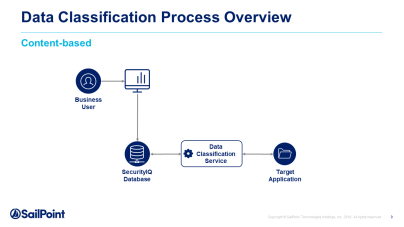Classification Types
Data Classification types include:
-
Content-Based Classification
-
Behavior-Based Classification
-
Composite Classification
Content-Based Classification
The classification engine indexes data based on file attributes and file contents (for text, office, and PDF files). The classification engine determines the file type by the file extension.

Behavior-Based Classification
Behavior-based classification classifies BRs based on actual user activity.
An example of a behavior-based classification rule would be to classify BRs as “Finance” if more than 80% of the activities in the last month were issued by users whose department is defined as Finance in Active Directory.

Composite Classification
In order to comply with complex regulations, it is sometimes required to use additional logic with data classification rules by combining the results of several classifications. The composite data classification rule is based on the File Access Manager categories already classified by the Content and Behavioral rules.
Note: A Data Classification policy cannot have both composite rules and other types of rules.